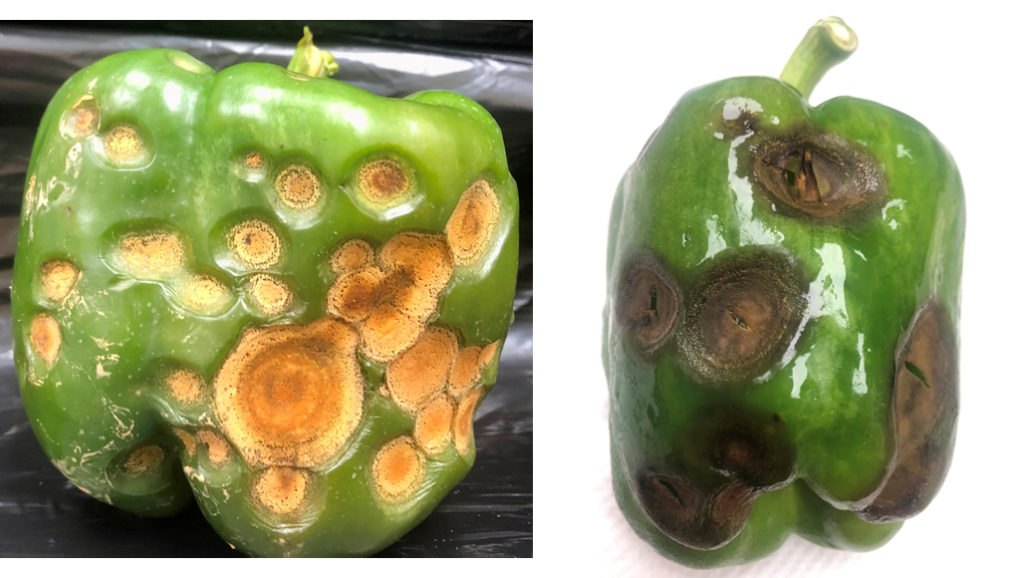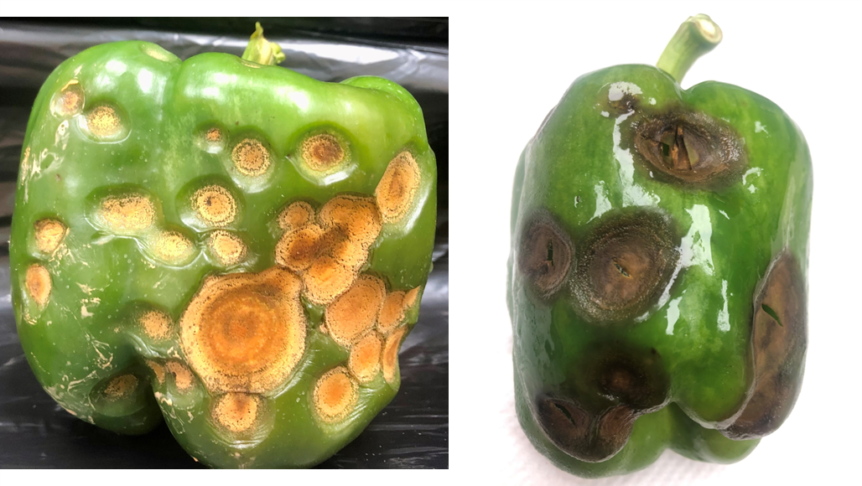
By Clint Thompson
Anthracnose in pepper is the basis for research collaboration between the University of Georgia and Cornell University.
Incidences of the disease have increased in pepper in recent years, sparking concern of a new species or species complex within the agricultural communities in both Georgia and New York. Because of the lack of treatment methods available to organic producers, conventional growers, with access to fungicides, are more apt to suppress the pathogen and its impact.

Organic producers must continue to depend on cultural practices for better control, says University of Georgia Extension Vegetable Plant Pathologist Bhabesh Dutta.
“Organic growers should rely on field sanitation and crop debris management as the pathogen can survive transiently on the later,” Dutta said. “Producers should implement optimum plant-spacing to promote aeration in the canopy, avoiding over-head irrigation, buying certified seeds and transplants, and practicing crop-rotation for at least three years if anthracnose occurs in the current season.”
The efficacy of OMRI-listed fungicides against the pathogen is still unknown in Georgia.
Dutta is collaborating with Sarah Jane Pethybridge, associate professor in the School of Integrative Plant Science with Cornell University. Her treatment recommendations align with what Dutta suggests for Georgia producers.
“In New York, the same recommendations are also being used for disease management in Georgia. However, we also recommend not reusing wooden stakes if you have had an anthracnose outbreak for the next pepper crop as the spores are sticky and therefore it can be difficult to disinfect these kinds of materials and prevent the introduction of inoculum into future crops,” she said.
“For the green fruit anthracnose outbreaks, we also recommended not walking through these areas before going to other pepper crops or healthy areas of the field due to the potential to spread spores on clothing.”
Symptoms of anthracnose are mostly observed with a typical sunken, necrotic lesion with concentrating rings. In some cases, symptoms can be seen on the foliage, too. If not managed, yield losses can be severe, especially with post-harvest fruit rot. The pathogen can also spread in storage bins and can secondarily infect other healthy-appearing pepper fruits.
Dutta said his research in Georgia will focus on evaluating and optimizing practices in field and storage that will reduce losses due to pepper anthracnose for organic growers.
“We will examine how different sources of inoculum (organic seed and crop debris) and production practices (irrigation, organic fertility practices) will limit losses due to this disease. We will also develop post-harvest practices that will include development of improved fruit-grading imaging technology for the detection of symptomatic pepper fruits and optimizing storage practices, including storage period, conditions and post-harvest treatments,” Dutta added.










